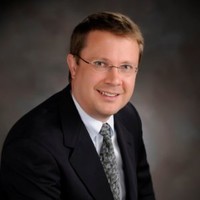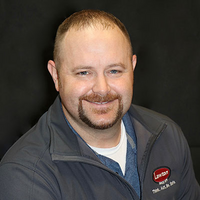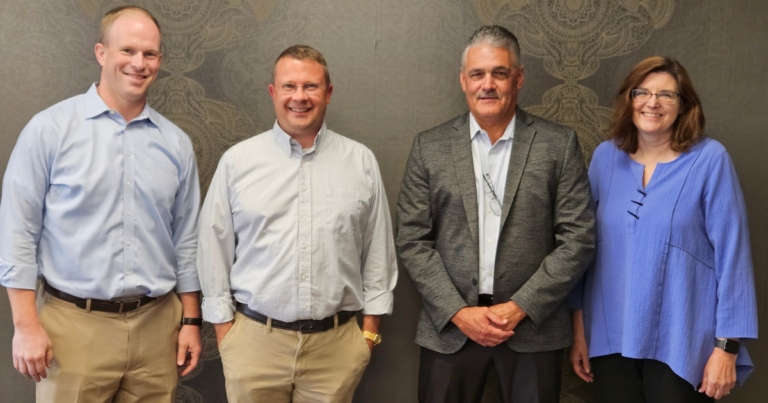The Lawton Standard Co. is raising the standard for foundries.
From high-alloy precision to complex metallurgical castings, Lawton Standard brings generations of expertise to every pour. Whether in iron or steel, we’re working to close the generation gap in foundries, bring manufacturing back onshore, and positively impact communities nationwide.
Our History
Though rooted in five generations, Lawton Standard was formed in 2019, when The C.A. Lawton Co. and Temperform, LLC expanded their reach and joined forces. From there, they grew with like-minded foundries to bring a new vision to American manufacturing.
Today, Lawton Standard proudly brings together what was known as:
Each addition strengthens our family of foundries, expanding our capabilities to serve your needs with unmatched quality and reliability. View the complete Lawton history here.
Alex Lawton, CEO and fifth-generation foundry owner, notes, “We’ve always known that ‘Lawton’ represents a legacy. As our family grows, so does our vision for the future of foundries. The time is right for us to unify our approach and set a new standard.”
At Lawton Standard, we’re more than a network of foundries—we’re a family grounded in shared knowledge, best practices, and a commitment to American manufacturing that endures across generations.
Raising the standard in foundries by investing in technology and systems to make work safer and cleaner.
Move from a handful of foundries to an integrated supplier of castings with the same management characteristics, policies, mission, and vision.

Alex and his family’s organization have been manufacturing goods and providing services from the Green Bay, Wisconsin area since 1879. His uncle, E.W. Arndt, began manufacturing a bran dressing machine under Novelty Manufacturing Co. in De Pere, Wisconsin. During the industrial boom of the early 1880s, they expanded capabilities to include pattern making, iron foundry, machining, and engineering design. This basic model of a machinery and machine component manufacturing company has been maintained. While much has changed in manufacturing since the company began, family ownership and management have provided stability and consistent leadership.
Today, Alex Lawton is CEO of The Lawton Standard Co. and The C.A. Lawton Co. The company is still based on values of honesty, caring about employees and customers, continual improvement of products and processes, and business success. Alex and his team work daily to make the customers’ experience easier. In addition, Alex is constantly working and investing in building new capabilities to combine them with the first-rate people and assets that exist throughout our organization.

Innovative manufacturing and operations executive with extensive experience in mergers and acquisitions and integrating newly combined companies. Raising the standard for foundries as the President of The Lawton Standard Company.
In Suber’s previous roles, he successfully managed iron and aluminum foundries operations, machining and forging businesses, and integrated acquisitions. He is committed to achieving the highest safety, quality, and productivity.
With extensive operations management experience within the automotive and heavy industry component manufacturing sectors, Suber possesses a strong history of improving safety, quality, and productivity.
Suber is currently the President of The Lawton Standard Co., where he is responsible for manufacturing operations (foundries and related services such as machining and pattern making), sales, engineering, purchasing, and project management.

Tim joined The Lawton Standard Co. as Chief Financial Officer in 2020, bringing a decade of experience working with middle-market industrial businesses. Tim oversees finance, treasury, and accounting activities, is responsible for information technology, and leads the company’s merger and acquisition efforts.
Tim joined Lawton from Oakland Standard Co., where he served as a Principal responsible for sourcing, evaluating, executing, and managing investments on behalf of the firm. Tim was previously a Vice President with private equity firms Superior Capital Partners and Glencoe Capital and began his career in investment banking with Houlihan Lokey in Chicago.
Tim holds a BBA in Finance from the University of Notre Dame and an MBA from the University of Chicago, Booth School of Business. He lives in Beverly Hills, Michigan with his wife and three children, and serves as a chauffeur to various youth sports events on nights and weekends.

Tierney’s manufacturing history goes back to when she started on a production line as she worked on her bachelor’s and graduate degrees. She has experience in human resources, quality, and ISO auditing.
In 2021, Tierney joined Lawton Standard as Chief Administrative Officer. She is helping to grow the business by bringing the plants together on a shared path of compliance, LEAN, human resources, and quality. Tierney enjoys helping people get what they need, solve their problems, or grow and develop their career paths.
Outside of work, Tierney enjoys spending time with her immediate and extended family.

Lori joined The Lawton Standard with two decades of experience with The C.A. Lawton Co.
Lori has worked for us in HR, Accounting, and IT.

Steve has been in foundry sales for over 30 years and has experience with foundry molding processes and domestic and international materials. Steve’s education consists of business management, sales and marketing classes, basic metallurgy, Statistical Process Control, and Miller Heiman Strategic Selling Course. He is a father of three kids who enjoys hunting, fishing, motorcycle riding, remodeling properties, swimming, and spending time with his children.

RJ has a wealth of foundry experience in various roles such as engineering, sales, and management.
RJ has a Bachelor of Science degree in Mechanical Engineering from Lamar University in Beaumont, TX.

Andy has over 30 years of experience in sales and customer service at companies ranging from large, worldwide corporations to his own “one-man show” operation. Andy strives for a relationship-building experience. Since joining Lawton in 2017, he was challenged to expand the marketing program to help promote the business.


1879


At Lawton —
In 1879, Civil War Veteran Charles Lawton and his uncle E.W. Arndt established the Novelty Manufacturing Company in De Pere, Wisconsin. The company’s name would later be changed to The C.A. Lawton Co. Their first invention was the “Bran Dresser,” a device designed by Lawton’s father for the purpose of separating bran from flour.
What was happening in the world —
1879 was also the year that Thomas Edison invented the lightbulb.
In 1885, The Statue of Liberty was gifted from France to the United States as a symbol of unity and independence.
1886

At Lawton —
In 1886, Jones Bank ran into financial difficulty, and as a result, closed its doors. Because the Novelty Manufacturing Company had taken out a loan from Jones Bank, its financial difficulty nearly caused the young company to close its doors. However, because of the generosity of local business owners, the company was able to stay afloat.
By 1890, Charles Lawton was able to pay off all debts owed to the local business men who had given assistance to the company. Lawton then went into business for himself and changed the name of the company to The C.A. Lawton Company.
What was happening in the world —
In early May 1893, the New York stock market crashed in an event known as the Panic of 1893. This event precipitated a four-year depression that was second only to the Great Depression.
1904

At Lawton —
In 1904, Charles Lawton began a partnership with a man named Edward Lauson. Together they formed an independent manufacturing company within the Lawton factory and called it the Lauson-Lawton Company.
The most profitable result of this partnership was the Lawton-Lauson gasoline engine. It was built in 1909, and was also known as the “Wisconsin” engine. Since electricity had not yet reached rura farming areas, Lawton and Lauson used the Lauson-Lawton engine was used to power portable generators, conveyor belts that took silage into silos, and to mechanically process grain.
1917


At Lawton —
In 1917, first generation president and company founder, Charles Lawton, passed away after dedicating 38 years to the company. The company was then taken over by Charles Lawton’s son, Edward Lawton.
What was happening in the world —
In 1917, the United States entered World War I, declaring war on Germany.
In 1919, World War I officially ended after signing the Treaty of Versailles.
During the post-war 1920s, America was experiencing an economic boom. For the manufacturing industry, this resulted in increased demand for coal on both the consumer and commercial sides of the market. Edward Lawton saw this as a great opportunity to expand the company’s consumer product offering. In 1928, Lawton began developing a line of coal stokers. This remained a profitable outlet for years until oil and natural gas replaced coal as a chief source of energy.
In 1929, the Great Depression began when stock prices fell by 23 percent causing the market to crash. To this day, the Great Depression remains the longest, deepest, most widespread depression in history.
1930


At Lawton —
The Great Depression also had a large impact on Lawton. The Lawton-Lauson Company disbanded in 1930, and the Buhl Company, with whom Lawton had been producing air compressors, went bankrupt. Because of this, the total production costs of the air compressors fell on Lawton. In addition, many dedicated workers were laid off. Those that stayed on, including Edward Lawton and his family, took dramatic pay cuts. Some weeks, payroll was missed altogether.
In order to create a financial bolster, and prepare for the future, Lawton began producing Rotor Stator presses, which led to making molding presses for rubber and plastics manufacturing in 1937. This product line allowed the company to gain a foothold in the increasingly profitable hydraulic press market, and gain stability.
In 1939, after a long decade of hardship, the Great Depression was finally coming to an end. Edward Lawton was feeling worn out, and decided it was time for his son, Charles A. Lawton II, to take over as president. Edward Lawton stayed on as vice president.
Also in 1939, a small band of men began designing the Lawton Roll Wrapper. Two brothers by the last name Witbro came to Charles Lawton and his father with an idea for a machine that became known as the Lawton Roll Wrapper. The purpose of the machine was to wrap toilet paper rolls in a tissue overwrap. Before its advent, factory workers were only able to wrap 5 to 7 rolls per minute by hand. This machine could wrap 50 rolls per minute automatically.
What was happening in the world —
In 1941, after the Japanese attack on Pearl Harbor, the United States entered World War II.
1941
At Lawton —
When the United States entered World War II in 1941, The C.A. Lawton Co. began manufacturing products for the war effort including ship propellers, submarine parts, and hydraulic shell banders. Through building a machine to band artillery shells, Lawton assisted in enhancing the accuracy and range of guns used on American ships during World War II.
What was happening in the world —
in 1945, Japan finally surrendered, officially ending World War II.
In 1955, the Vietnam War began. This war was precipitated by decades of political conflict and became inevitable when the United States became involved in President Ngo Dinh Diem’s fight against communism in Vietnam.
1967-1969



At Lawton —
Between 1967 and 1969, The C.A. Lawton Co. began production of nylon tooth gears. This was the first major innovation in decades for power transmission. This Lawton design was an important innovation for workplace safety in the paper industry because it reduced noise levels in manufacturing facilities.
Until 1971, Charles Lawton III was the only engineer with a degree at the company. The rest of Lawton’s engineers were trained through its apprenticeship program. However, in 1970, one of Lawton’s designs was engineered incorrectly. This flaw in engineering cost the company between $35,000 and $40,000. As a result, Lawton began hiring degreed engineers and adopted a culture that was focused on engineering and the efficiency of the process.
In 1973, Charles Lawton II passed away suddenly, leaving his sons Randall W. Lawton, and Charles A. Lawton III to carry on the company legacy. In order to figure out who would take over as president after the passing of their father, Randall Lawton and Charles Lawton III decided to flip a coin. Charles Lawton III then took over as president.
Towards the end of 1973, The C.A. Lawton Co. decided to enter into a joint venture with Rothe Foundry of Green Bay. Lawton’s foundry needed updating. However, this would be a costly investment. By entering into a joint venture with Rothe, Lawton could combine its small foundry operation with Rothe’s and make investing in a new foundry worthwhile. This relationship lasted until 1978 when Rothe went bankrupt.
What was happening in the world —
In 1975, the Vietnam War came to an end. Saigon had finally fallen, and the people’s army of Vietnam had won.
1978


At Lawton —
In 1978, Randall W. Lawton took over as president of The C.A. Lawton Co. Additionally, after the bankruptcy of Rothe, Bay Engineered Castings (BEC) was formed. BEC became the brand identity for Lawton’s foundry and the castings it produced. Charles Lawton III remained involved as treasurer of BEC.
In 1983, a recession hit. This recession resulted in the sinking of the Bay Engineered Castings. In order to restore the company, Randall Lawton took over as president of BEC. His first action as president was to hire leadership-minded individuals, and assist them in designing better processes both for manufacturing and communication.
By 1985, through Randall’s leadership, Bay Engineered Castings was on its feet again.
What was happening in the world —
In 1991, the World Wide Web was introduced, and for the first time ever, a global connection was possible via the internet.
September 11, 2001 was a devastating day in our nation’s history. On this day, terrorist attacks on the World Trade Center and Pentagon resulted in the deaths of nearly 3,000 people. We forever remember the victims and heroes of 9/11.
2003 – 2010


At Lawton —
Just after 9/11, a recession hit Lawton’s corner of industry in 2001.
In 2003 the company was still struggling due to this industry recession, so Alex Lawton, son of Randall Lawton, decided to work part time to assist his father. Alex focused on BEC while Randall focused on Lawton, and together they rebuilt the company.
In 2005, there was a boom in the waterworks industry, and Lawton immediately took advantage of this opportunity. This resulted in new business for the company, and an inflow of capital that helped it become profitable once again.
On June 6th 2006, Alex became the 5th generation president of The C.A. Lawton Co. Months later, on December 21st 2006, Bay Engineered Castings and The C.A. Lawton Co., through a reverse merger, became one company. The foundry became the Lawton foundry.
In 2008, a recession hit. This was called The Great Recession due to the dramatic dip in the economy, and how long it took to recover. During the recession, those who stayed on at Lawton took pay cuts and worked only three weeks per month to avoid laying people off.
2011 – 2018


At Lawton —
After the recession, in 2011, Lawton focused on rebuilding financially, and on paying everyone back for their sacrifices during the recession. They also made new hires, and took advantage of a post-recession boom in the natural resources market, manufacturing parts needed for mining, oil and gas, and agriculture industries through 2014.
In 2015, Alex decided to begin using the lean business model at Lawton. Later that year, he met Barry Adamski, current COO of Lawton, at a business function. They began discussing Alex’s plan to integrate lean into Lawton, and Alex found that Barry was also an advocate for this business model.
In early 2016, Barry began splitting time between another job and Lawton in order to provide support for Lawton’s lean journey. By summer of 2016, Barry came on full time as COO, and as an ally to Alex in getting the company on board with lean.
Most recently in 2018, Lawton began development of its social media marketing program with aims of reaching new audiences in order to continue its success long into the future. Additionally, Lawton began working with a customer it pursued for almost 15 years. Now that this company has gotten to know Lawton and its capabilities, they are treating the company as a significant supplier-partner. In addition, a major multi-national industrial company has made Lawton its only gold-status preferred supplier of its type in their network.
2019 – present

At Lawton —
In January 2020, The C.A. Lawton Company & Temperform combined to serve customers better. This merger will allow each company access to the other’s products and enhance value-added offerings across their customer bases. This new specialty metals platform will operate under the umbrella of Oakland Standard. This firm specializes in helping organizations grow through mergers and acquisitions as well as facility and automation investments. (Learn More)
In April 2020, Damascus Steel Casting Company joined Temperform and The C.A. Lawton Co. (Learn More)
In July 2020, Midwest Manufacturing & Logistics joined The C.A. Lawton Co. family. Midwest Manufacturing & Logistics, an iron foundry located in Minster, Ohio, operates as a second location of The C.A. Lawton Co. (Learn More)
In February 2021, Penn-Mar Castings joined The C.A. Lawton Co. family. Penn-Mar Castings, a gray-and-ductile iron foundry located in Hanover, Pennsylvania, joins the platform. (Learn More)
In April 2021, the metals platform The Lawton Standard Co. was announced.
In August 2022, Northern Iron & Machine (St. Paul, MN) joins the Lawton family.
In November 2022, American Iron (Versa-Bar) joined the family.
In July 2023, AMSCO Wear Products, Inc. was added to the family.
In March 2024, Lawton Standard combined with Renaissance Manufacturing Group.
A global pandemic, COVID-19 changes the way we live, work, and view safety. View COVID-related updates here.